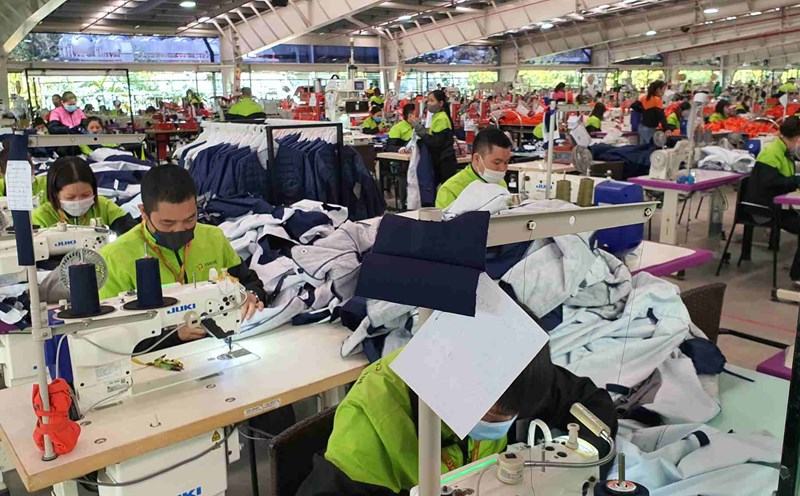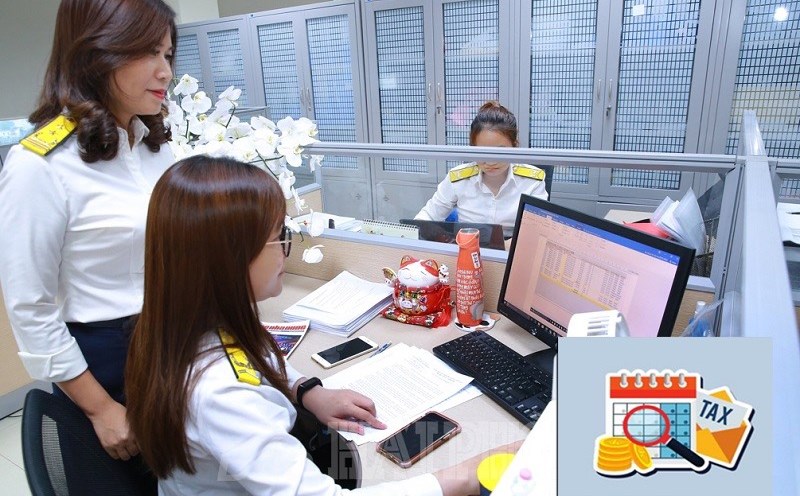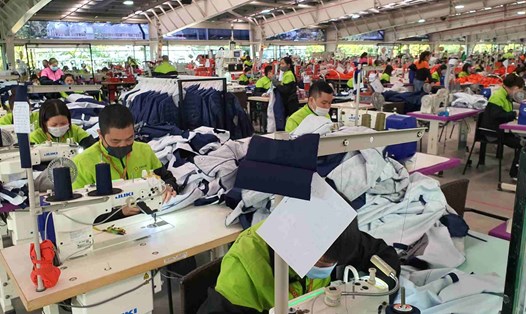Businesses catch up with the game
Representing textile and garment enterprises, Mr. Dang Vu Hung - Chairman of the Board of Directors and General Director of Phong Phu Group (PPJ Group) - said that digital technology helps green production and green growth of enterprises, creating outstanding sustainability. However, the dual transformation process is a big challenge, especially for small and medium enterprises and enterprises with limited potential.
For example, at PPJ, the roadmap to adjust sustainable development indicators according to customer requirements from 2023 to 2030 needs to ensure recycling of 70% of wastewater from textile products, increase the use of green raw materials to 50%, or increase the use of green chemicals to 90% - an almost absolute level...
“The Government has had many policies and support programs to promote digital transformation and green transformation in businesses, but it still needs to be further improved,” Mr. Hung shared.
Mr. Ngo Minh Hai - Chairman of the Board of Directors of TH Group - gave an example of sustainable development at TH such as the AfiTagTM Chip system worn on cows' legs to monitor health, milk production, estrus time, thereby managing reproduction for dairy cows... However, according to Mr. Ngo Minh Hai, the business faces a big challenge in that the mindset of digital transformation in parallel with green transformation is only at the level of awareness and initial implementation.
“There needs to be more specific policies from the Government to encourage and promote businesses to transform from a media production model to a digital technology application model and green, circular models,” said Mr. Ngo Minh Hai.
Digital transformation and green transformation go hand in hand
According to Dr. Tran Thi Hong Minh - Director of the Central Institute for Economic Management (CIEM) - we must frankly admit that the business community does not understand much, has not invested much, has not implemented much, and has not benefited much from the digital transformation and green transformation process.
“For policy-making agencies, this is a worrying reality, not only in terms of the quality of documents but also in terms of the lack of practices at the enterprise level to develop more specific, “close-to-home” policies. For example, without information and coordination from enterprises, officials and civil servants will never be able to research and specify specific standards for circular economy projects in a specific field,” affirmed the Director of Institute CIEM.
Dr. Can Van Luc - member of the National Monetary and Financial Policy Advisory Council, Chief Economist of BIDV Bank - said that digital transformation and green transformation need to go hand in hand, because these two factors support and complement each other very closely.
Referring to the immediate tasks that need to be done as soon as possible, Dr. Can Van Luc said that businesses are currently expecting three things from the management agency. First, the green classification list is not yet available. Only from the green classification list can there be green finance, green credit... Second, the circular economy project that CIEM consulted on since June 2022, but after 2 years, there is still no specific action plan for developing the circular economy. Third, unlocking resources, institutions and policy mechanisms.
"In the long term, it is necessary to soon establish a National Productivity Committee to improve labor productivity. Second, promote science and technology. Although it is a key industry, there is still no sandbox testing mechanism to develop fintech, artificial intelligence (AI)...
In addition, the Law on Digital Technology Industry and the Law on Science and Technology need to be passed soon for better digital transformation. Third, businesses that want to transform green need support resources, in addition to policy mechanisms" - Dr. Can Van Luc suggested.
According to Mr. Tim Evans - General Director of HSBC Vietnam, Vietnam currently ranks second in the ASEAN region in terms of e-transactions, only behind Indonesia, a country with a population three times larger than Vietnam. According to HSBC, the estimated cost of transitioning to Net Zero globally is 3.5 trillion USD/year. Vietnam alone needs 400 billion USD by 2040 to bring net emissions to zero. Of which, the two areas with great potential in Vietnam are wind power and solar power.











